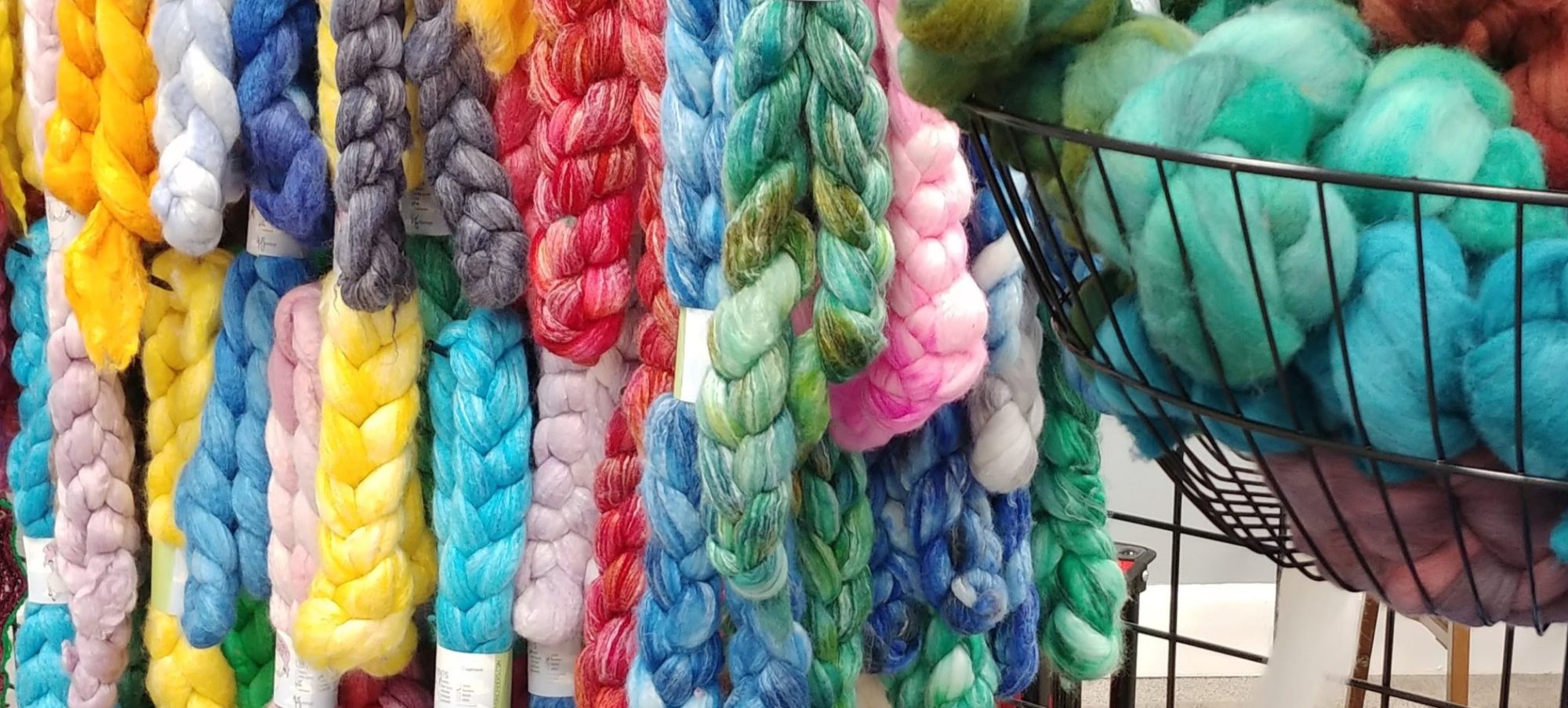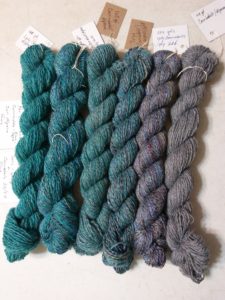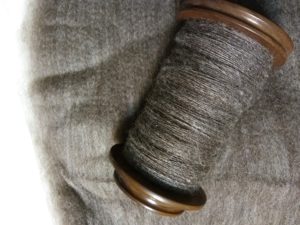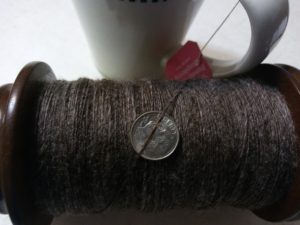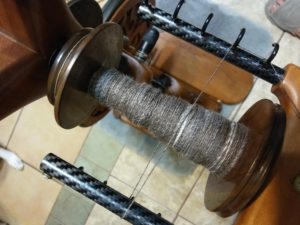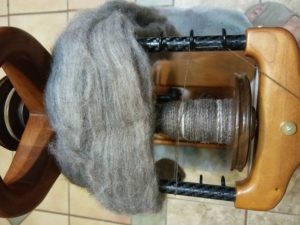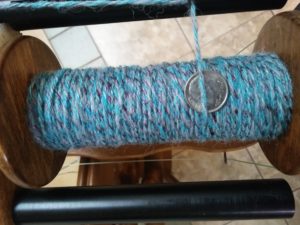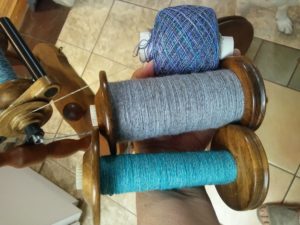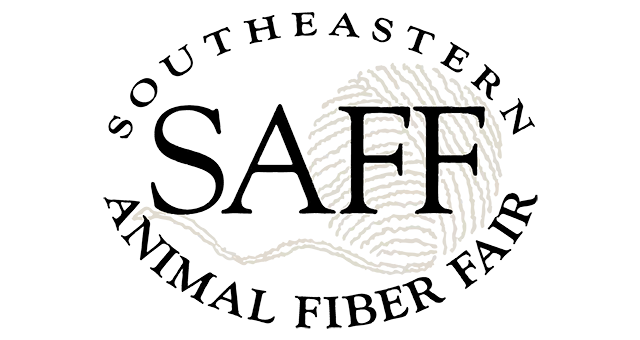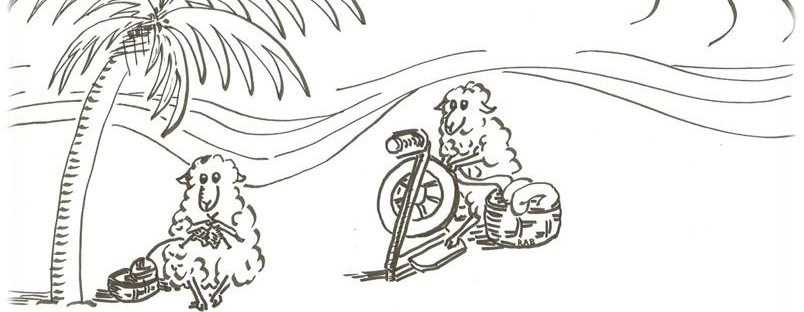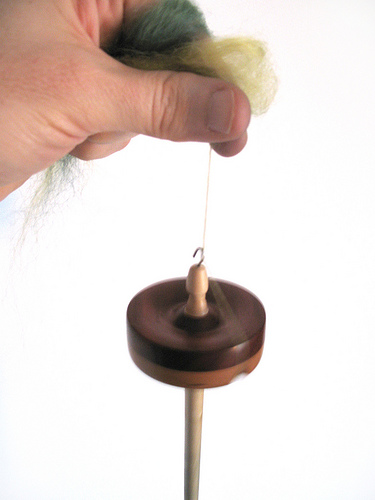I love the spring when coreopsis is blooming along the roadsides and in fields. It is the one time of the year that my dyeing desires turn from acid dyes to the natural colors from plants and bugs (Lac and cochineal). I like a little more plant to fiber to concentrate and deepen the colors. Last year I also acquired a large basket of Brazilwood chunks and madder root. I love seeing the colors of the dyebaths and then the colors of the mordanted wool that emerges from the dyepot!
Coreopsis: I collected about 1.25 # of coreopsis flower heads and simmered them in a stainless steel pot for about 1 hour. I let the dyebath cool overnight and then used cheesecloth to strain out the flowers and bits.
The fiber was a combination of Polwarth fleece from Scotland and various blends of rovings and top: Targhee, Targhee/silk/bamboo, Merino/bamboo/silk, and BFL. I divided up the fiber so that it was fairly evenly divided into 4 oz servings of mixed fibers.
I used four mordants: alum with cream of tartar, chrome (no assist), copper with vinegar, and tin with cream of tartar. Each mordant bath was set up using a stainless steel pot filled with city water and then the mordant was allowed to dissolve as the water heated up. Once the mordant was completely dissolved and the water getting close to simmer, I introduced the wool, pressed it under the surface, and let the pot temperature come up to a low simmer. The fiber gets moved around a couple of times and simmers for about 45-60 minutes. Turn off the heat, and let the pot cool overnight. The next morning, I rinse the wool gently in cool water, squeeze out excess water, and lay it out to dry or go straight to the dye bath. Mordanted wool can be dried and used at a later time.
I now have a dye bath and 4oz servings of wool and wool blends for each mordant. Now it’s time for magic! I add extra water so the dye bath will accommodate 1# of wool and turn on the heat. Once the dye bath is at a low simmer, I introduce all the wool at once and watch the colors strike! The different mordants bring out different dye colors. 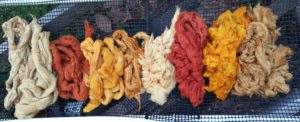 Alum makes a soft buttery yellow. Copper yields a more coppery yellow with orangey tones. The chrome is my all time favorite with the coreopsis with the rich red/orange color! The surprise was the tin. On the fleece, it is a bright orangey yellow but on the Targhee/bamboo/silk, it is more tan. The bamboo resists the dye completely.
Alum makes a soft buttery yellow. Copper yields a more coppery yellow with orangey tones. The chrome is my all time favorite with the coreopsis with the rich red/orange color! The surprise was the tin. On the fleece, it is a bright orangey yellow but on the Targhee/bamboo/silk, it is more tan. The bamboo resists the dye completely.
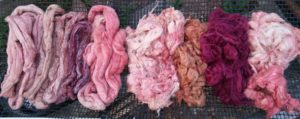 I used the same method for some Brazilwood chips. I simmered the chips for about an hour and then let the dye cool over night. The wood chips were dried and await the next dye bath. Yes, they can be reused! Wool was mordanted the same way and all was put into the dye bath at the same time. Copper mordant on white wool gives the wool a distinctive green tinge. When this green wool hit the dye bath, it turned a brilliant purple! What a surprise! The other colors were the more expected shades of pinks to roses.
I used the same method for some Brazilwood chips. I simmered the chips for about an hour and then let the dye cool over night. The wood chips were dried and await the next dye bath. Yes, they can be reused! Wool was mordanted the same way and all was put into the dye bath at the same time. Copper mordant on white wool gives the wool a distinctive green tinge. When this green wool hit the dye bath, it turned a brilliant purple! What a surprise! The other colors were the more expected shades of pinks to roses.
Now to decide how to blend and spin these natural colors!
